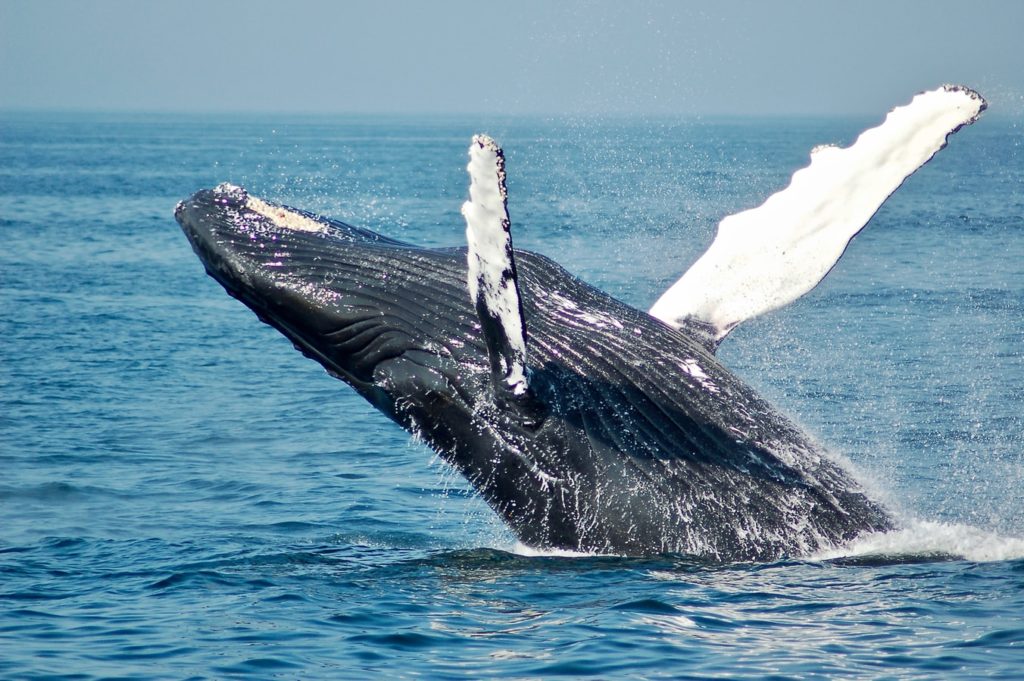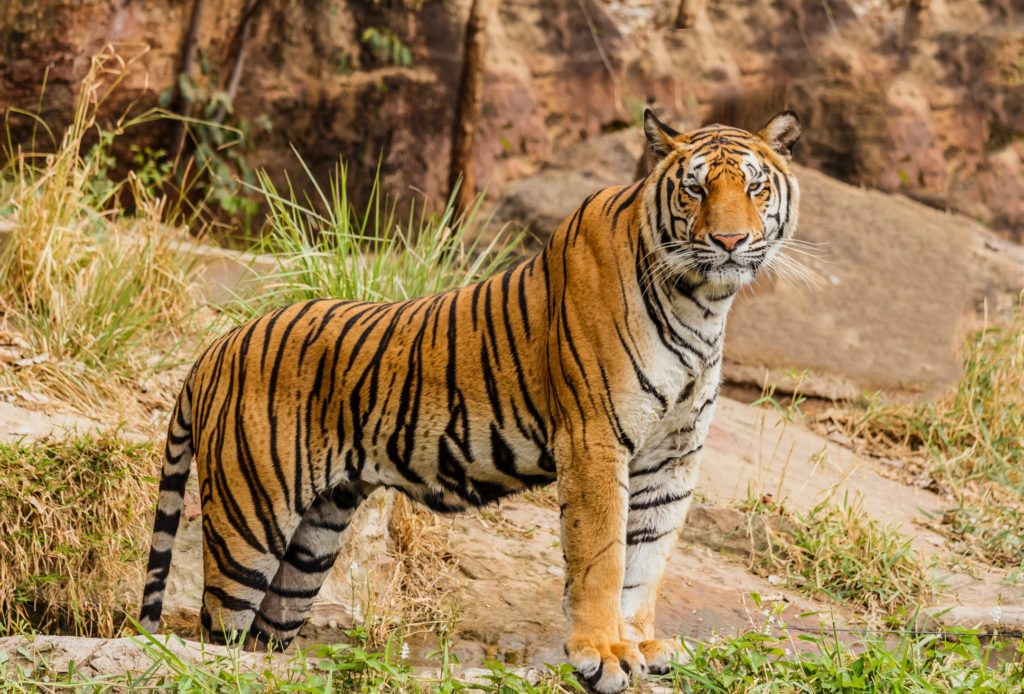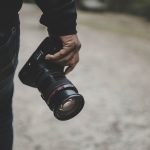Whether capturing images of Bengal tigers roaming the jungles of the Indian subcontinent, or taking close-up shots of a rare bird species in a National Park an hour’s drive from home, the life of a wildlife photographer is one of adventure. And patience.

Whales do not breach on cue. Squirrels will vanish at the slightest perception of a threat. Herbivores are skittish creatures, prone to flight. Carnivores, particularly apex predators at the top of their food chain, will stand their ground. But they’re still going to show up at their own leisure. And nocturnal creatures? Well, you could be up all night hoping to get the shot. That, too, can be an adventure.
If you love the natural world and being outdoors, if the art and craft of photography get your creative juices flowing, wildlife photography can combine both passions into a rewarding and financially lucrative career.
Beyond an investment in the photography equipment, you won’t need expensive training to start work as a wildlife photographer. Practice and experience will lead to greater skill, although there are plenty of photography courses you can take that will help you reach your goals faster. We’ll cover all that and much more as you explore what it takes to become a wildlife photographer.
In this article you’ll learn:
- How much money you can make as a wildlife photographer
- The required training and certifications
- Professional groups to join
- Employment opportunities for wildlife photographers
- Finding clients
- Plus helpful tips
How much money can you make?
The average salary for a wildlife photographer in the United States is $40,676 annually, according to a recent survey of job openings in this field by ZipRecruiter. On the high end, wildlife photographers with an established business and years of experience are making more than $81,000 per year.

Wildlife photographers may work for magazines or organizations such as National Geographic, or they may work on a freelance basis. Freelance wildlife photographers can write their own paychecks, depending on how much work they can get. One challenge of being a freelancer, though, is it’s up to you to find the work.
Training and Certification
Wildlife photography is not licensed or regulated at the state level in the United States. There is a chance some regulations are in place at the city or county level. A quick call to your local government will confirm one way or another if there are any regulations governing photographers in your area. Chances are, there will be none.
You can pursue a college degree in photography as part of a fine arts program, but a college education is not essential to be a wildlife photographer. There are many online training programs available that you can buy and work through at your own pace. You might also find the local community college or the continuing education program at a nearby university offers individual courses in photography. One benefit of going this route is you get regular feedback from an instructor. That may not always be possible with online courses, where you’re essentially on your own.

In terms of fundamental skills, you’ll need to be a competent photographer, familiar with all the camera settings and how to use them to take great pictures. You’ll also need to study animal behavior so you can track and locate your subjects in their habitat.
Patience is also important. Unlike other types of photography, such as shooting portraits or sporting events, with wildlife photography your subjects won’t necessarily show up on your schedule.
Experience in being outdoors under sometimes rugged conditions and for long periods of time is an essential skill. Likewise, physical fitness is important. You must be able to reach the places where your wildlife subjects can be found. This also means you’ll also be carrying more equipment. Besides a camera bag with photography gear, at minimum you’ll need sunglasses, a good sunscreen lotion, a compact poncho or some other foul weather protection when it rains (because it will), and a water bottle or canteen as well as protein snacks. Your exact needs on any assignment will depend on your preferences, the weather and shooting conditions (mountainous terrain versus sandy beaches or a desert), and how long you expect to be on location. You can’t concentrate on your art if you’re miserable about the weather.
As you’re developing your talents, don’t feel the need to buy every piece of camera equipment that catches your eye. That’s a fast way to go deep in debt if you start pulling out the credit card every time you see a new lens advertised in a photography magazine. A standard 50mm lens will get you started. A telephoto lens is also essential. Buying one with a focal length of at least 300mm – 600mm is even better if you can afford it. All the in-between and specialty lenses, such as for extreme macro photography, can wait until you can either afford them or get an assignment that demands a specialty lens, in which case it becomes essential. Regardless, you’ll have plenty of gear to lug around without packing more into your camera bag. When going into the field, take only what you’re sure to need. At 600mm, the telephoto lens alone might weigh 15-20 pounds.
Professional Groups to Join
There are many professional photographers’ organizations you can join to network with other pros and advance your career. Here are three of the most relevant to wildlife photographers:
Professional Photographers of America is the premiere organization of photography pros in the United States. A full membership is open to anyone living in the United States or its territories and costs $323 per year. Benefits include:
- $15,000 equipment insurance policy
- Data loss protection
- Access to all online education courses
- Online referral database listing
- Printed and digital monthly issues of Professional Photographer magazine
- One full registration to Imaging USA during the first year of membership
- Business Resources
- Contracts and Copyright Resources
- Access to Member Discount Program
- Weekly newsletter

The Society of International Nature and Wildlife Photographers offers three membership tiers for pros and enthusiasts. Pros receive a full business listing on the society’s website. Other membership benefits include weekly newsletters, regular educational programs, photography competitions and forums for sharing tips and techniques with other members. The society offers a free 2-month trial of the professional membership; after that it’s $11.25 per month.
The North American Nature Photography Association offers networking with other professionals, continuing education, exclusive events and seminars, and more. Annual membership is $100.
Employment
Contact newspapers, magazines and the editors of online sites devoted to photography, the natural world or both. Send them your marketing materials, brochures and business cards. Follow up with a phone call in a day or two. If your contact says she’s already working with a photographer, ask if she knows anyone who needs your services. Don’t be discouraged by rejection when calling potential clients. The very next call you make could be gold.
Use the networking power of your professional memberships to find assignments.
Develop and maintain working relationships with publications in your area. If you capture a stunning image of a bald eagle in flight, you’ll already have contacts who may want to buy your images as a local-interest item for their publications.
Finding Clients
Business cards and a basic website should be the core of your marketing toolkit as a wildlife photographer. The website need not be fancy or expensive, just attractively designed, with photos of your best wildlife photography work, your business location and contact information. No need to include your pricing. You can discuss that directly with clients.

In addition to your business website, the next thing to do is create an Instagram account to showcase your wildlife photography. Instagram is the #1 online venue for creative professionals to display their work. It’s a free promotional tool that’s always working on your behalf.
Other strategies for attracting new business:
- Create a referral program with discounts for returning customers who bring new clients to you.
- Ask clients to review your services online. According to a recent survey, 90% of people say their buying decisions are influenced by positive online reviews.
Good to know
While you’re in-between assignments, which will happen with any type of freelance work, here are some ways to continue making money from your wildlife photography.

Sell photos at craft fairs
Set up a booth or table at local and regional fairs to sell prints of your wildlife photography. There is some risk involved in the sense that you must invest in quality print stock and clear, plastic sleeves to protect your images, with no assurance you’ll sell all or any of the prints. But with a winning personality and great images to show off, a motivated wildlife photographer can use craft fairs to make good money on the side.
Offer workshops in wildlife photography
Many communities have photography clubs where enthusiasts get together to discuss their craft and art. Combine that with the popularity of birding, for example, and this is an opportunity to turn your knowledge into cash. One approach is to offer a field experience in wildlife photography so the entire class meets at some prearranged outdoor destination. You conduct the workshop and help students for an afternoon of polishing their photography skills. The beauty of this approach is it offers hands-on learning and you don’t need a formal space to teach.
Sell images directly to magazines and newspapers
Magazine editors are always on the lookout for sharp content. Newspapers tend to be interested in more timely events, such as a bear sighting at the local YMCA swimming pool, but a great photo sells itself. If you can build a series of photos around a story or sequence of events, such as a succession of images featuring a robin feeding her hatchlings, the likelihood of a sale goes up. Publications are looking for content that tells stories or shows their audience something rare and unusual.
If you enjoyed this article, check out some more great PocketSuite.io content that can help you grow your career as a wildlife photographer. Here’s a great place to start.PocketSuite has thousands of business owners who all started where you are right now. Our community is always happy to help you ramp up, grow your client base, and achieve your income goals, both within the PocketSuite app and as part of our exclusive Facebook Community Group. PocketSuite’s vision is for any professional to be able to work for themselves and make a great living. It starts here. It starts with you. It starts today. Let’s get started, download PocketSuite now! Feel free to reach out with any questions (we’d love to hear from you)! Text us @ (415) 841-2300.





